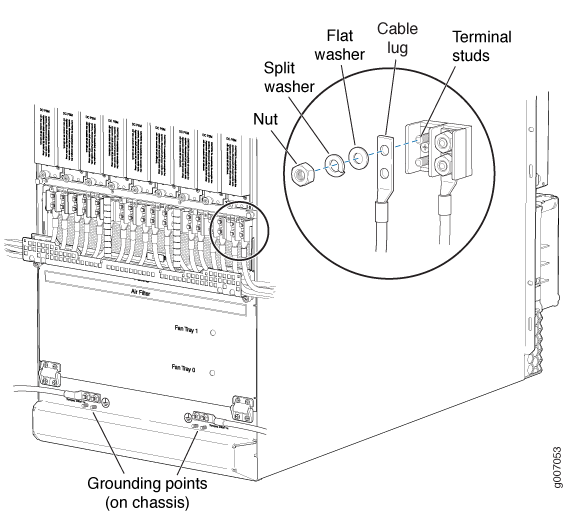Replacing an MX2010 DC Power Distribution Module Cable
Disconnecting an MX2010 DC Power Distribution Module Cable
Before performing DC power procedures, disconnect all power sources. To ensure that all power is off, locate the circuit breaker on the panel board that services the DC circuit, switch the circuit breaker to the OFF position, and tape the switch handle of the circuit breaker in the OFF position.
To disconnect a power cable for a DC PDM:
Connecting an MX2010 DC Power Distribution Module Cable
Before performing DC power procedures, disconnect all power sources. To ensure that all power is off, locate the circuit breaker on the panel board that services the DC circuit, switch the circuit breaker to the OFF position, and tape the switch handle of the circuit breaker in the OFF position.
To connect a power cable for a DC PDM:

